Fountain pens with converters are pretty common, and while it's possible to take apart a converter, not everyone is comfortable doing so right away. Each converter is a little bit different too, so how to disassemble it depends on what kind of converter it is.
You can also disassemble your fountain pen to thoroughly clean it, but this voids the warranty. Like converters, each fountain pen is different so they all have different ways of being disassembled. If you're not comfortable disassembling your fountain pen to clean it, that's okay. It took me a good two years of fountain pen use before I was comfortable enough to pull a nib and feed out, believe it or not.
You may have bought your fountain pen and it worked great for awhile, and now after some time of use, it doesn't flow as well, it feels dry when you write, it skips, and it's just not as enjoyable to use. ... Have you been cleaning it? Here are some very simple ways to clean your fountain pen and converter. The key is to do this regularly! Each time your pen runs out of ink or you change inks, clean it out properly, and you can avoid ink clogging up in the feed or any other issues.
Let's use a kit pen. Here is one, for example - made by Brett Thompson. It takes a Schmidt converter.
The first thing you can do is flush the converter and section out a few times with some lukewarm water. Sometimes, if it's a stubborn ink (very dark, saturated), or if the ink had dried out in the feed before I had a chance to clean it, I'll leave the nib and section to soak in water a little.
The bulb is easy to find, and is extremely useful, saving you a lot of time of filling and emptying your converter through the section (to clean the feed). You can pick them up at a local pharmacy, or find one online if you can wait, such as on Amazon
You can pick up a few bulbs if you have a few fountain pens with different sized sections. You can simple cut the tip to the appropriate size, so the section can fit inside the tip - snugly. Fill it with water and squeeze it through the section.
Cleaning the converter can also be made easier with the help of a syringe and needle. A blunt needle that screws on to the tip of a syringe will make your life a lot easier. A pack of needles will last you a long time, and blunt needles are safer because you don't want to stab yourself or through your converter. Syringes need to be replaced eventually, but will still last a long time.Blunt Tip 14 gauge needle - 50 pieces
A ten pack of 20 ml syringes
A ten pack of 5 ml syringes with 14G blunt tip needles
A ten pack of 10 mL syringes with 18G blunt tip needles
Using lukewarm water, flush out the inside of your converter until it's clear and clean. If it's not clear enough to see, flush it until the water running out is clear.
This method of cleaning your converter can also be applied to a cartridge you want to refill.
If you have some really crusty, dried up ink and it's proving to be stubborn even with water, you can always make some pen flush - a 10% ammonia solution in water with a couple drops of dish washing detergent.
You will need:
Tap water/distilled water
Household Strength Ammonia Solution
If you have some really crusty, dried up ink and it's proving to be stubborn even with water, you can always make some pen flush - a 10% ammonia solution in water with a couple drops of dish washing detergent.
You will need:
Tap water/distilled water
Household Strength Ammonia Solution
Dish washing detergent
If you are going to use pen flush, flush your pen with water first, then use your pen flush solution, and be sure to wash your pen out again with water after! You can also purchase pre-made pen flush if you prefer.
If you are going to use pen flush, flush your pen with water first, then use your pen flush solution, and be sure to wash your pen out again with water after! You can also purchase pre-made pen flush if you prefer.
Last but not least, an easy final step is to take some fibrous, wicking-type paper towel (such as paper towel, toilet paper, etc), and place the nib and converter facing down on it. This helps draw out any remaining water/ink that could be in it. For the green folk out there, I re-use this piece repeatedly. It lasts a long time.
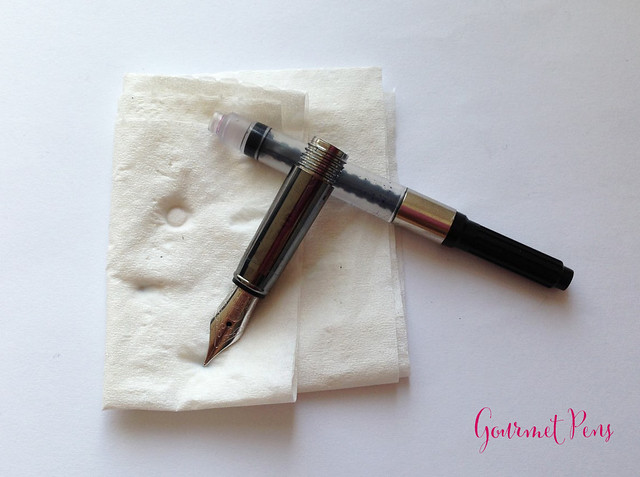
These are just some simple, basic ways to clean out your feed, nib, and your converter (or cartridge). What do you do to clean your pens? Do you clean your pens regularly?
For disassembly instructions, check out SBREBrown's Disassembly Line series.
Do a gal a solid and if you fancy any of these and want any item of your own, use my affiliate links :)

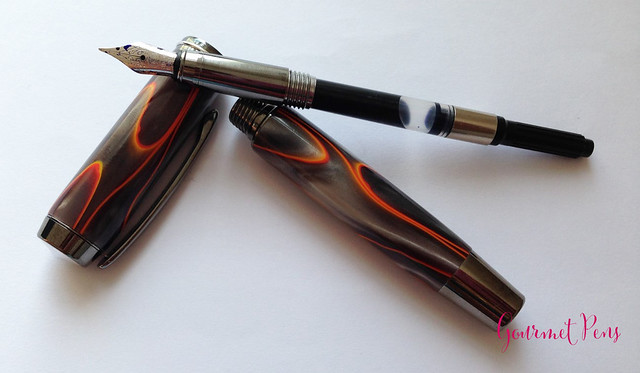
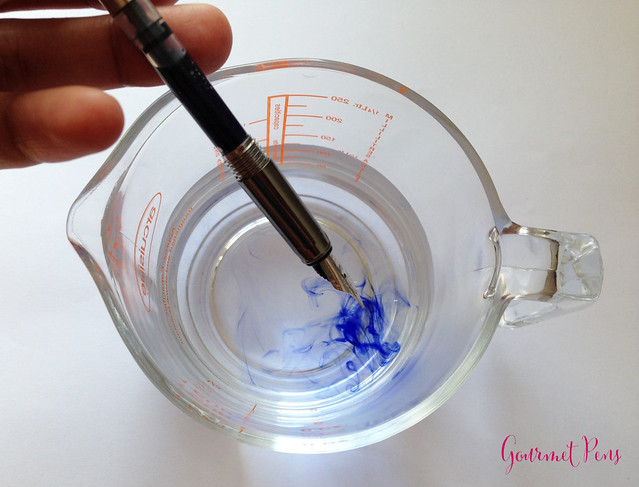
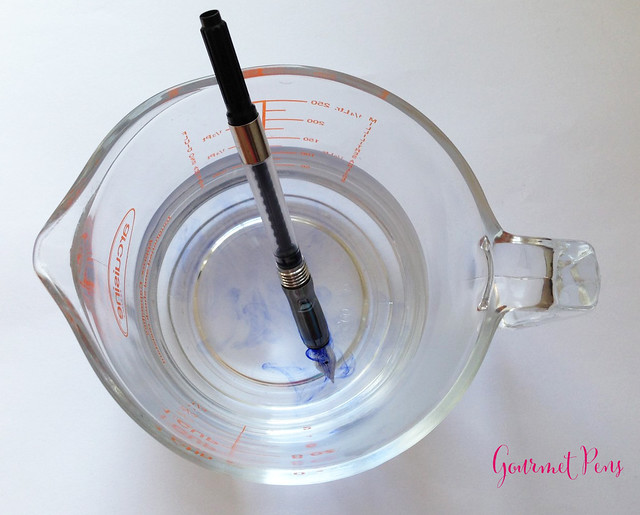
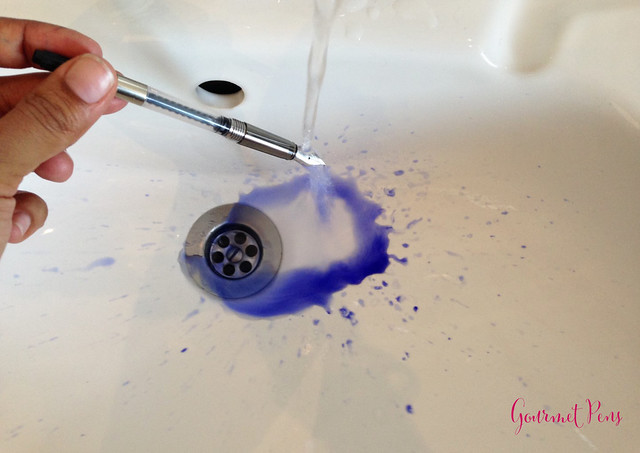
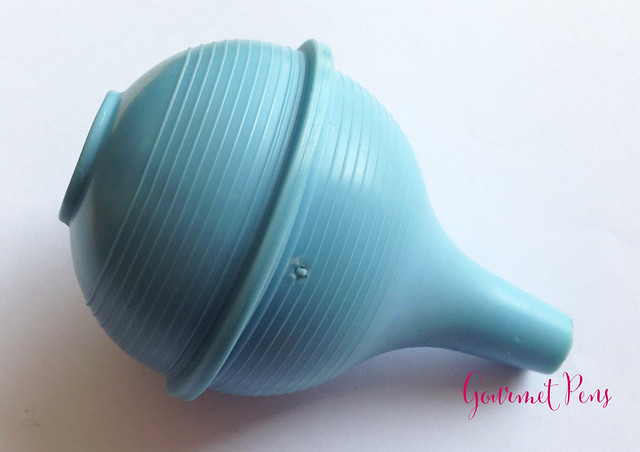
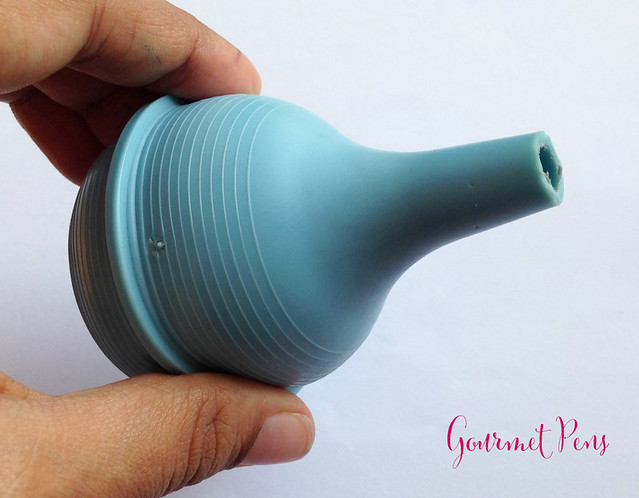
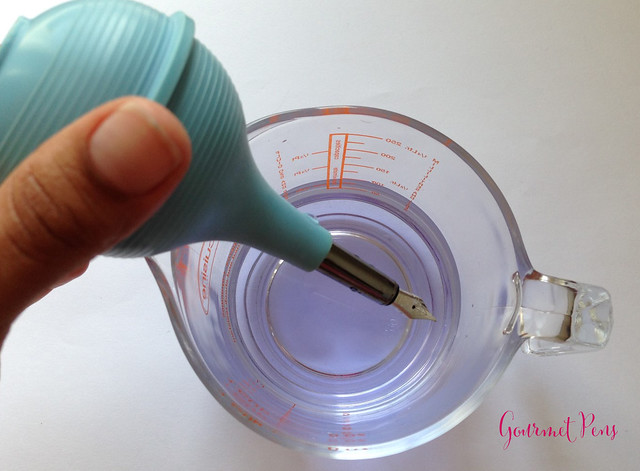

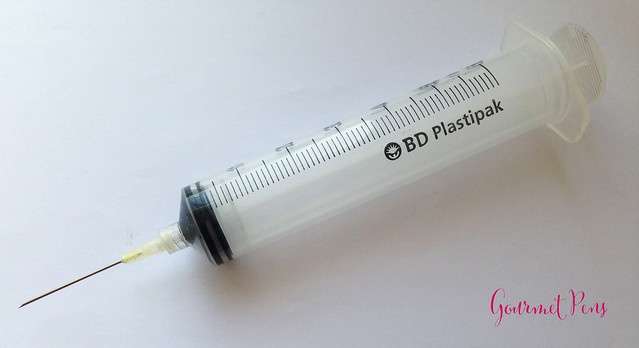
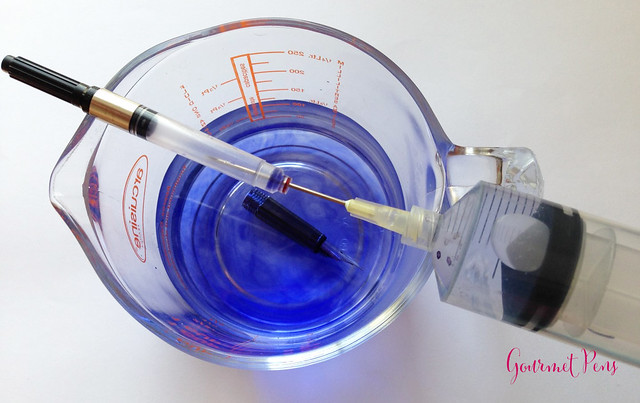
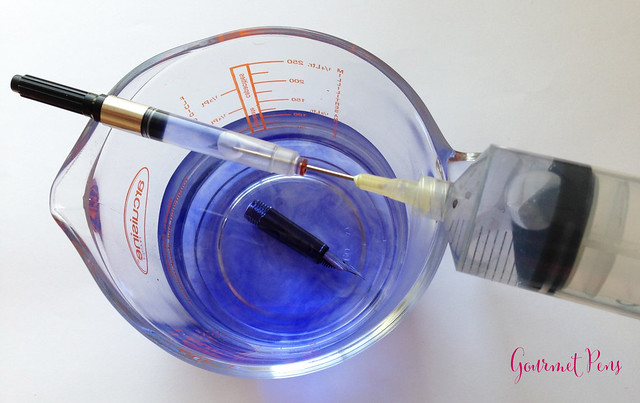





















6 comments:
I never thought of using a syringe to clean out the converter. You have saved me a lot of annoying twisting of the piston knob!!
Brilliant; lots of clever ideas. I never thought of using a syringe either. I admit I'm lazy. I flush the converter and the pen's nib section, then leave everything to soak in a cup of water. Each time the water looks inky, I flush again. I try to clean my pens once every couple of weeks, and each time I change inks. Thanks for this article -- I'm saving it so I can try the syringe thing. :-)
It's changed my life too :) Although the 60 ml syringe is too big for me to operate so I prefer 20 ml for converter flushing!
I'm totally lazy too. I hate cleaning pens because I'm lazy but I also hate when I can see traces of other colours, so I have to clean them completely. High pressure and the syringe helps immensely!
You can use a sharpening stone to make the syringe needle blunt
Instead of using the bulb directly on the section, you can cut the back end off an empty cartridge. The bulb seals up to that really easily, and of course the front end of the cartridge is already designed to mate to the section perfectly. I do this to use a single bulb for my Lamy and international-cartridge pens. (Got this idea from Goulet Pens).
Post a Comment